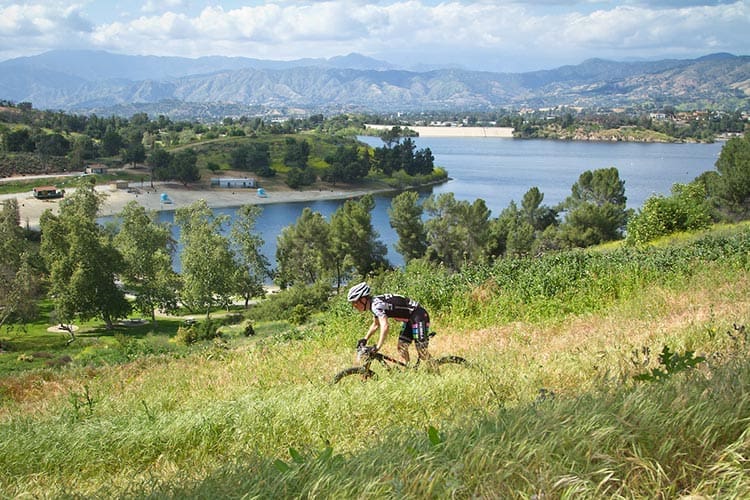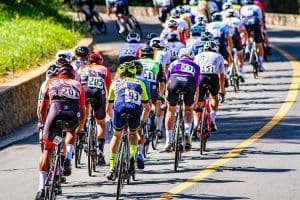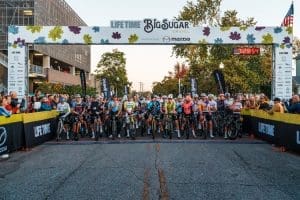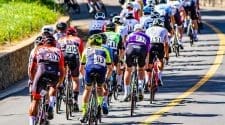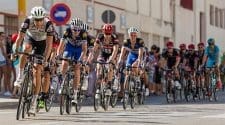In the hard world of cycling, the post-race phase is critical for competitors trying to sustain maximum performance. This article explores a number of post-race tactics that help cyclists recuperate. We provide riders with the information they need to enhance their recovery speeds and general performance by going over specific diet programs, rest schedules, and active recovery techniques.
Dietary Support for Healing
Proteins, carbs, and fats are the macronutrients that are primarily targeted in post-race nutrition since they are necessary for energy restoration and muscle regeneration. Thirty minutes after a race, consuming a 3:1 carbohydrate to protein ratio aids in quick muscle repair and glycogen replacement. For example, 20 grams of protein and 60 grams of carbs could be included in a meal.
After a race, rehydration is essential because perspiration causes fluid loss. To guarantee adequate rehydration, cyclists should try to drink 150 percent of the weight they lost during the race in liquids over the following four to six hours. For instance, a cyclist should drink 1.5 liters of fluid if they lose 1 kilogram of body weight during a race.
Micronutrients, like vitamins and minerals, are essential for the synthesis of energy and the proper operation of muscles. For instance, magnesium helps lessen tiredness and cramping in the muscles. To restore these vital nutrients, a diet rich in fruits, vegetables, and fortified foods should be balanced.
Rest and Healing
Perhaps the best rehabilitation aid available to cyclists is sleep. Getting between seven and nine hours of good sleep per night promotes hormonal balance and muscle repair. It should be a top priority for cyclists to create a quiet, light-free sleeping space.
Light exercise, like yoga or walking, combined with active rest can speed up muscle healing and lessen stiffness. Performing these kinds of exercises for thirty to sixty minutes on rest days facilitates blood flow and healing without putting undue strain on the muscles.
Resting mentally is just as important as sleeping. The mental energy and focus needed to perform well in competition can be restored by practices like mindfulness, meditation, or even taking up a hobby.
Techniques for Active Recovery
Following a race with a thorough cool-down helps lower heart rate gradually and keeps lactic acid from building up in the muscles. It is advised to cool down with stretching or low-intensity cycling for 15 to 20 minutes.
Frequent physiotherapy and massage treatments can improve blood flow and reduce muscle tension, which can help avoid long-term injuries and hasten the healing process. For instance, a half-hour massage with an emphasis on the legs and lower back can greatly accelerate healing.
By increasing blood circulation, compression clothing can help minimize edema and pain in the muscles after a race. After working out, these clothes are usually worn for several hours or even overnight.
Psychological Techniques for Healing
Cycling enthusiasts may be encouraged to follow their recovery regimens religiously by setting short-term recovery objectives. Setting goals, such reaching a particular flexibility level or heart rate variability score, might help you stay on track with your recuperation.
Techniques for mental conditioning, such visualization and relaxation exercises, can hasten the process of psychological recovery, which is frequently just as demanding as physical activity.
In addition to recovery strategies, cyclists in North Carolina can take advantage of sports betting promos to stay engaged with the cycling community and enjoy some off-track competition. This can also act as a mental diversion, reducing the risk of burnout from continuous training.
Tracking the Course of Recovery
It is possible to give cyclists real-time data on their recovery status and make necessary adjustments to their recovery techniques by using wearable technology to measure heart rate, sleep quality, and activity levels.
It’s critical to receive regular updates on recovery progress from coaching staff. This involves modifying diet, rest periods, and training volume in accordance with each person’s pace of recuperation.
Equipping cyclists with self-assessment skills, such as tracking their emotional moods, level of exhaustion, and soreness in their muscles, can help them determine when they need to recover and avoid overtraining.
Final Thoughts
As we get to the end of our analysis of post-race tactics for cyclists, it is clear that successful recovery requires a multimodal strategy. The factors that determine the rate and caliber of an athlete’s recovery include diet, rest, and active recovery; these are not merely suggestions.
Using these techniques consistently can greatly improve a cyclist’s capacity to deliver high-level performances on a regular basis. A comprehensive recovery plan is ensured by embracing technology innovations for monitoring in conjunction with tailored feedback and mental health techniques. Adopting these thorough recuperation regimens is not only advantageous for professional cyclists, but it is also a vital investment in their continued athletic performance.
Photo © Christy Nicholson / EchelonDesignPhoto.com
No products found.


